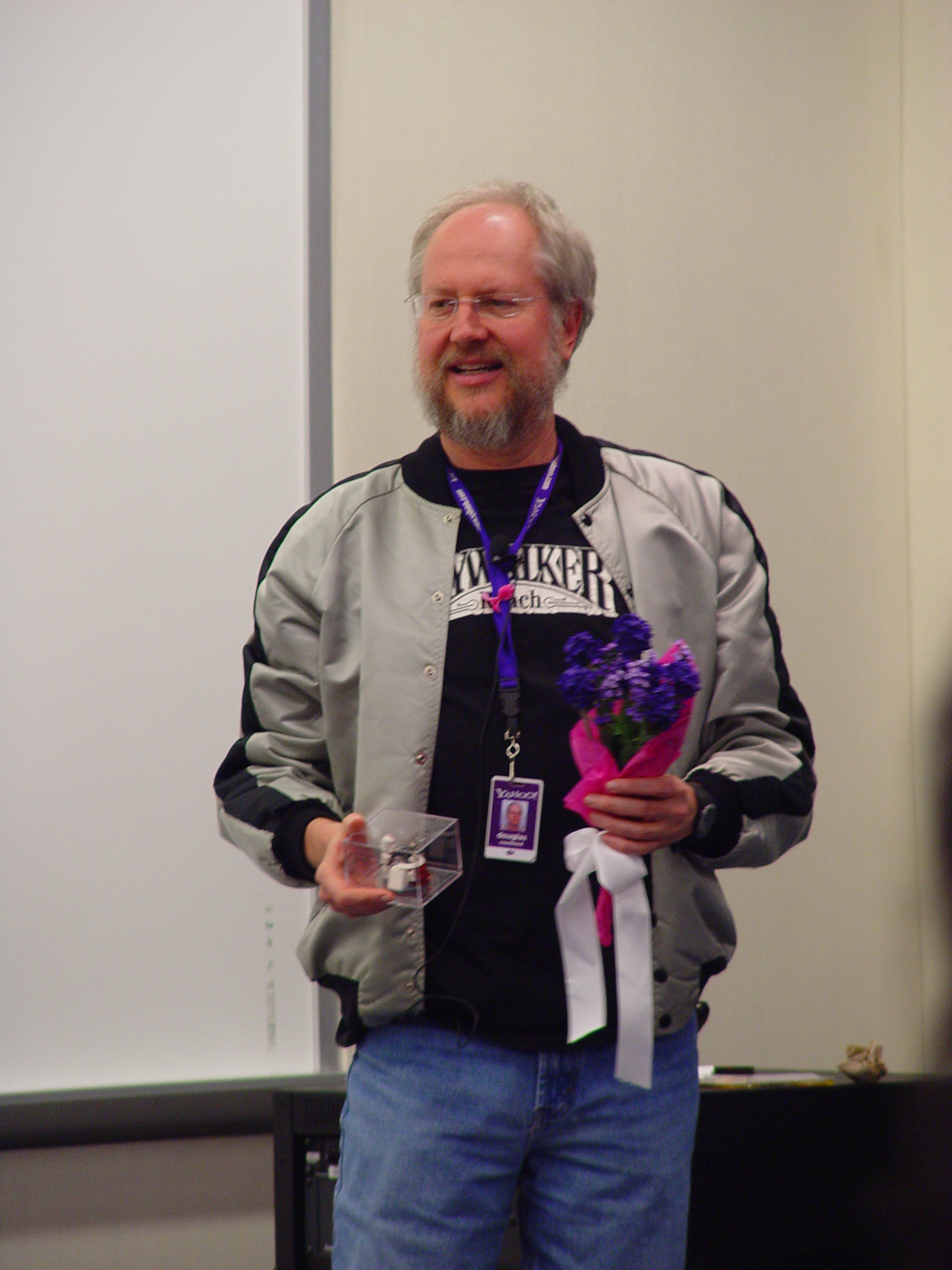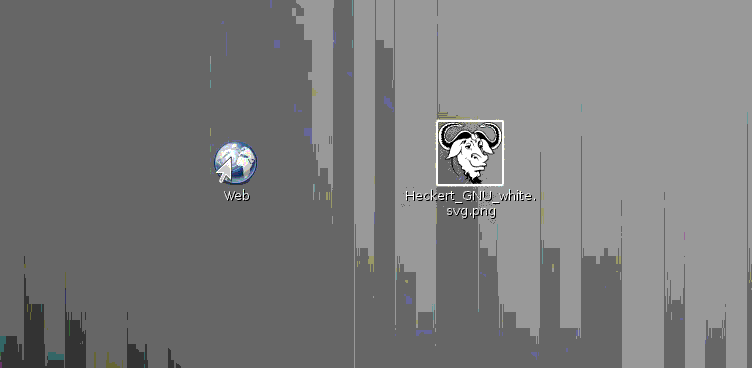|
Verge3D
Verge3D is a real-time renderer and a toolkit used for creating interactive 3D experiences running on websites. Overview Verge3D enables users to convert content from 3D modelling tools (Blender, 3ds Max, and Maya are currently supported) to view in a web browser. Verge3D was created by the same core group of software engineers that previously created the Blend4Web framework. Features Verge3D uses WebGL for rendering. It incorporates components of the Three.js library and exposes its API to application developers. ; Puzzles : Application functionality can be added via JavaScript, either by writing code directly or by using Puzzles, Verge3D’s visual programming environment based on Google Blockly. Puzzles is aimed primarily at non-programmers allowing quick creation of interactive scenarios in a drag-and-drop fashion. ; App Manager and web publishing : App Manager is a lightweight web-based tool for creating, managing and publishing Verge3D projects, running on top of the lo ... [...More Info...] [...Related Items...] OR: [Wikipedia] [Google] [Baidu] |
Blend4Web
Blend4Web is a free and open source framework for creating and displaying interactive 3D computer graphics in web browsers. Overview The Blend4Web framework leverages Blender to edit 3D scenes. Content rendering relies on WebGL, Web Audio, WebVR, and other web standards, without the use of plug-ins. It is dual-licensed. The framework is distributed under the free and open source GPLv3 and, a non-free license - with the source code being hosted on GitHub. A 3D scene can be prepared in Blender and then exported as a pair of JSON and binary files to load in a web application. It can also be exported as a single, self-contained HTML file, in which exported data, the web player GUI, and the engine itself are packed.Прахов, Андрей (Июль, 2015). "Blend4Web". ''Linux Format'', стр. 20. The HTML option is considered to be the simplest way. The resulting file, which has a minimum size of 1 MB, can be embedded in a web page using a standard iframe HTML element ... [...More Info...] [...Related Items...] OR: [Wikipedia] [Google] [Baidu] |
Facebook 3D Posts
Facebook 3D Posts was a feature on the social networking website Facebook. It was first enabled on October 11, 2017 by introducing a new native 3D media type in Facebook News Feed. Initially the users could only post 3D objects from Oculus Medium and marker drawings from Spaces directly to Facebook as fully interactive 3D objects. The feature was available for desktops and mobile phones that support the underlying WebGL API. On February 20, 2018 Facebook added support for the industry-standard glTF 2.0 file format for Facebook 3D posts. This allowed artists and creators to share 3D content on Facebook from a variety of sources. To make 3D Posts glTF 2.0 compliant, the support for textures, lighting, and physically based rendering techniques was implemented. 3D posts also supported unlit workflows for photogrammetry and stylized art. Facebook has since disallowed users from sharing 3D objects. Creating 3D Posts There were four ways to get a 3D asset to appear in a Facebook Post: ... [...More Info...] [...Related Items...] OR: [Wikipedia] [Google] [Baidu] |
GlTF
glTF (Graphics Library Transmission Format or GL Transmission Format and formerly known as WebGL Transmissions Format or WebGL TF) is a standard file format for three-dimensional scenes and models. A glTF file uses one of two possible file extensions: .gltf (JSON/ASCII) or .glb ( binary). Both .gltf and .glb files may reference external binary and texture resources. Alternatively, both formats may be self-contained by directly embedding binary data buffers (as base64-encoded strings in .gltf files or as raw byte arrays in .glb files). An open standard developed and maintained by the Khronos Group, it supports 3D model geometry, appearance, scene graph hierarchy, and animation. It is intended to be a streamlined, interoperable format for the delivery of 3D assets, while minimizing file size and runtime processing by apps. As such, its creators have described it as the "JPEG of 3D." Overview The glTF format stores data primarily in JSON. The JSON may also contain blobs of binar ... [...More Info...] [...Related Items...] OR: [Wikipedia] [Google] [Baidu] |
Autodesk 3ds Max
Autodesk 3ds Max, formerly 3D Studio and 3D Studio Max, is a professional 3D computer graphics program for making 3D animations, models, games and images. It is developed and produced by Autodesk Media and Entertainment. It has modeling capabilities and a flexible plugin architecture and must be used on the Microsoft Windows platform. It is frequently used by video game developers, many TV commercial studios, and architectural visualization studios. It is also used for movie effects and movie pre-visualization. 3ds Max features shaders (such as ambient occlusion and subsurface scattering), dynamic simulation, particle systems, radiosity, normal map creation and rendering, global illumination, a customizable user interface, and its own scripting language. History The original 3D Studio product was created for the DOS platform by the Yost Group, and published by Autodesk. The release of 3D Studio made Autodesk's previous 3D rendering package AutoShade obsolete. ... [...More Info...] [...Related Items...] OR: [Wikipedia] [Google] [Baidu] |
JSON
JSON (JavaScript Object Notation, pronounced or ) is an open standard file format and electronic data interchange, data interchange format that uses Human-readable medium and data, human-readable text to store and transmit data objects consisting of name–value pairs and array data type, arrays (or other serialization, serializable values). It is a commonly used data format with diverse uses in electronic data interchange, including that of web applications with server (computing), servers. JSON is a Language-independent specification, language-independent data format. It was derived from JavaScript, but many modern programming languages include code to generate and parse JSON-format data. JSON filenames use the extension .json. Douglas Crockford originally specified the JSON format in the early 2000s. Transcript: He and Chip Morningstar sent the first JSON message in April 2001. Naming and pronunciation The 2017 international standard (ECMA-404 and ISO/IEC 21778:2017) ... [...More Info...] [...Related Items...] OR: [Wikipedia] [Google] [Baidu] |
Autodesk Arnold
Autodesk Arnold (also known as simply Arnold) is a computer program for rendering three-dimensional, computer-generated scenes using unbiased, physically-based, Monte Carlo path tracing techniques. Created in Spain by Marcos Fajardo, it was later co-developed by his company Solid Angle SL (now owned by Autodesk) and Sony Pictures Imageworks. Arnold is one of the most widely used photorealistic rendering systems in computer graphics worldwide, particularly in animation and VFX for film and television. Technology Originally written in C99 and progressively rewritten in C++, Arnold runs natively on x86 and Apple CPUs, where it tries to take advantage of all available threads and SIMD lanes for optimal parallelism. Since March 2019 it supports Nvidia RTX-powered GPUs through the use of OptiX. Its ray tracing engine is optimized to send billions of spatially incoherent rays throughout a 3D scene composed of geometric primitives including polygons, hair splines, and volu ... [...More Info...] [...Related Items...] OR: [Wikipedia] [Google] [Baidu] |
Physically Based Rendering
Physically based rendering (PBR) is a computer graphics approach that seeks to render images in a way that models the lights and surfaces with optics in the real world. It is often referred to as "Physically Based Lighting" or "Physically Based Shading". Many PBR pipelines aim to achieve photorealism. Feasible and quick approximations of the bidirectional reflectance distribution function and rendering equation are of mathematical importance in this field. Photogrammetry may be used to help discover and encode accurate optical properties of materials. PBR principles may be implemented in real-time applications using Shaders or offline applications using ray tracing or path tracing. History Starting in the 1980s, a number of rendering researchers worked on establishing a solid theoretical basis for rendering, including physical correctness. Much of this work was done at the Cornell University Program of Computer Graphics; a 1997 paper from that lab describes the work done at Cor ... [...More Info...] [...Related Items...] OR: [Wikipedia] [Google] [Baidu] |
Amazon Elastic Compute Cloud
Amazon Elastic Compute Cloud (EC2) is a part of Amazon's cloud-computing platform, Amazon Web Services (AWS), that allows users to rent virtual computers on which to run their own computer applications. EC2 encourages scalable deployment of applications by providing a web service through which a user can boot an Amazon Machine Image (AMI) to configure a virtual machine, which Amazon calls an "instance", containing any software desired. A user can create, launch, and terminate server-instances as needed, paying by the second for active servershence the term "elastic". EC2 provides users with control over the geographical location of instances that allows for latency optimization and high levels of redundancy. In November 2010, Amazon switched its own retail website platform to EC2 and AWS. History Amazon announced a limited public beta test of EC2 on August 25, 2006, offering access on a first-come, first-served basis. Amazon added two new instance types (Large and Extra-La ... [...More Info...] [...Related Items...] OR: [Wikipedia] [Google] [Baidu] |
Amazon S3
Amazon Simple Storage Service (S3) is a service offered by Amazon Web Services (AWS) that provides object storage through a web service interface. Amazon S3 uses the same scalable storage infrastructure that Amazon.com uses to run its e-commerce network. Amazon S3 can store any type of object, which allows uses like storage for Internet applications, backups, disaster recovery, data archives, data lakes for analytics, and hybrid cloud storage. AWS launched Amazon S3 in the United States on March 14, 2006, then in Europe in November 2007. Technical details Design Amazon S3 manages data with an object storage architecture which aims to provide scalability, high availability, and low latency with high durability. The basic storage units of Amazon S3 are objects which are organized into buckets. Each object is identified by a unique, user-assigned key. Buckets can be managed using the console provided by Amazon S3, programmatically with the AWS SDK, or the REST application ... [...More Info...] [...Related Items...] OR: [Wikipedia] [Google] [Baidu] |
Drag-and-drop
In computer graphical user interfaces, drag and drop is a pointing device gesture in which the user selects a virtual object by "grabbing" it and dragging it to a different location or onto another virtual object. In general, it can be used to invoke many kinds of actions, or create various types of associations between two abstract objects. As a feature, drag-and-drop support is not found in all software, though it is sometimes a fast and easy-to-learn technique. However, it is not always clear to users that an item can be dragged and dropped, or what command is performed by the drag and drop, which can decrease usability. Actions The basic sequence involved in drag and drop is: * Move the pointer (computing WIMP), pointer to the object * Press, and hold down, the button on the computer mouse, mouse or other pointing device, to "grab" the object * "Drag" the object to the desired location by moving the pointer to this one * "Drop" the object by releasing the button Draggi ... [...More Info...] [...Related Items...] OR: [Wikipedia] [Google] [Baidu] |
Blockly
Blockly is a client-side library for the programming language JavaScript for creating block-based visual programming languages (VPLs) and editors. A project of Google, it is free and open-source software released under the Apache License 2.0. It typically runs in a web browser, and visually resembles the language Scratch. Blockly uses visual blocks that link together to make writing code easier, and can generate code in JavaScript, Lua, Dart, Python, or PHP. It can also be customized to generate code in any textual programming language. History Blockly development began in summer 2011. The first public release was in May 2012 at Maker Faire. Blockly was originally designed as a replacement for ''OpenBlocks'' in App Inventor. Neil Fraser began the project with Quynh Neutron, Ellen Spertus, and Mark Friedman as contributors. User interface The default graphical user interface (GUI) of the Blockly editor consists of a toolbox, which holds available blocks, and where a use ... [...More Info...] [...Related Items...] OR: [Wikipedia] [Google] [Baidu] |




